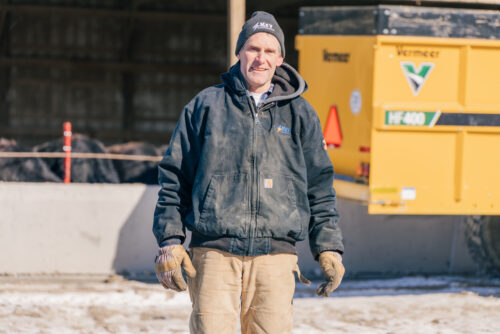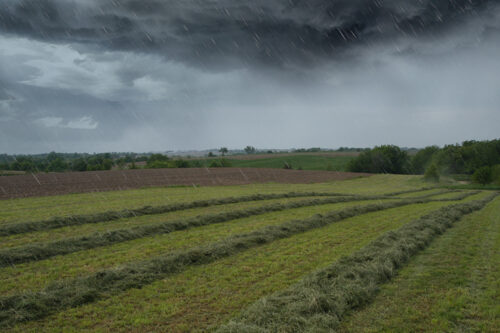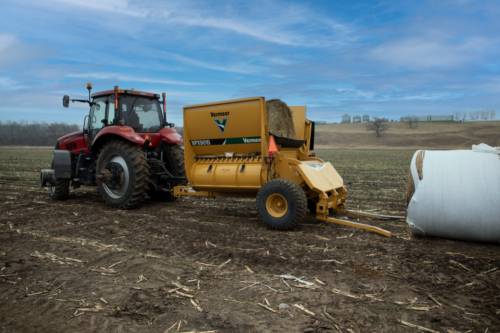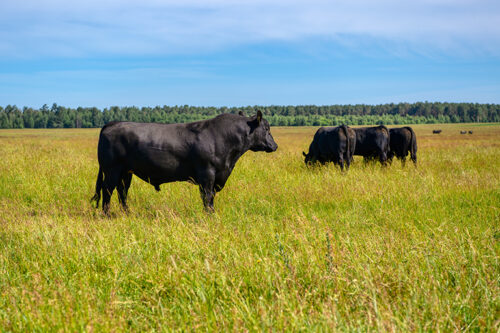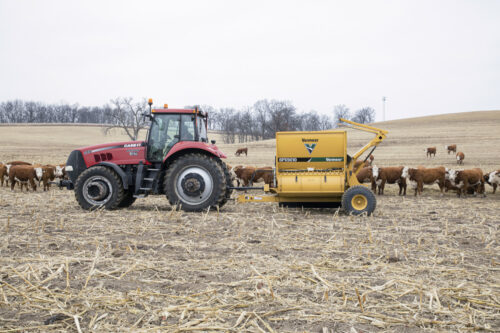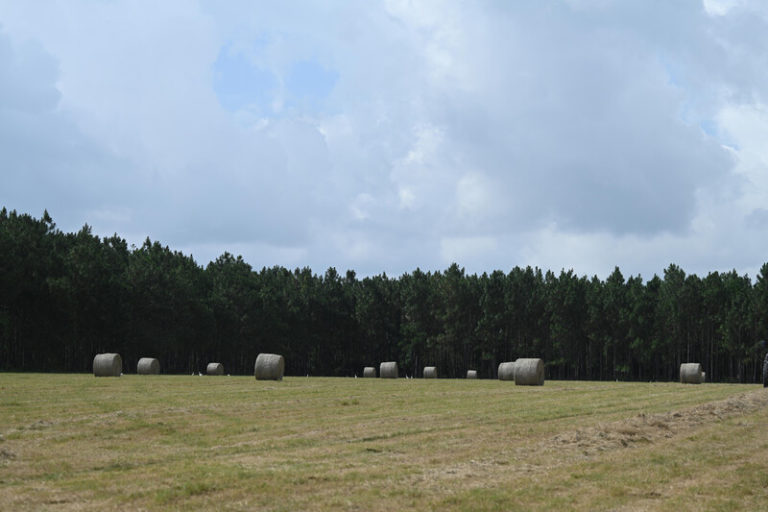
Managing a hay shortage and the effects of drought on agriculture
July 2022
When drought conditions continue year after year, the hay shortage creates more challenges for hay and cattle producers. We talked to the experts to get ideas on how to help manage the effects of drought on agriculture, specifically for hard-hit hay and cattle producers. Here we outline potential strategies for hay producers, followed by ideas for cattle producers.
How can hay producers help offset costs during a hay shortage?
Drought can be devastating for hay producers. Tim Schnakenberg, the University of Missouri Extension agronomy specialist, shared ideas to help them get through drought periods. “Land is expensive. Time is expensive. Inputs are expensive. Try to make the most out of every acre,” Schnakenberg says. “To do this, try to get more hay harvested on fewer acres.” According to the Beef Cattle Research Council, a productive pasture needs plant diversity. If a pasture lacks diversity, production will be limited. A solid pasture management plan can also help producers maximize forage.
Schnakenberg also recommends producers try to minimize how often they must move equipment around. One way to do this is to try making hay in one vicinity per day, weather permitting.
Prepare for the worst to minimize the effects of drought on hay operations
Schnakenberg also recommends that hay producers always have a game plan to handle worst-case scenarios. That game plan is as unique as the producer’s operation. It depends on the land, the climate and the resources available — just to name a few factors. Here are some ideas Schnakenberg shares.
- Prepare for an early harvest. If there’s a window of opportunity, producers should jump on it. They should have equipment ready to go so they can get the season started as soon as possible. Producers can consider planting warm-season annual grasses to be able to harvest in a drier season.
- On the other hand, some producers may want to plant cool-season forage to extend their grazing season. Letting cows graze until everything has been consumed or buried by deep snow, can help minimize costs associated with harvesting and storing hay.
- Weed control may also help with improved yields of quality forage. Producers should identify the weeds they’re dealing with, take advantage of early control methods and follow all withdrawal times on the herbicide label.
Rely on equipment to help maximize harvest during drought years
Using a tedder can help speed up the hay-making process and can optimize hay quality. “If you’re actively looking to take control of your hay by minimizing harvest loss and maximizing crop quality — consider the Vermeer 10-series tedders. The 10-series tedders create a bottoms-up motion to rotate the dry crop to the bottom and the wet crop to the top, which helps producers evenly dry the crop,” said Vermeer Product Manager Shawn Wang.
How can cattle producers manage through a hay shortage?
In a tough drought year, more than 50% of the U.S. beef cow herd is directly threatened, according to Drovers. Katelyn McCullock, senior economist and director for Livestock Marketing Information Center, shared her thoughts on how drought conditions can impact cattle operations and ideas to help minimize the situation.
Strategizing to help make feed go further
When areas see drought conditions year after year, hay prices can skyrocket. “Hay prices look like they’re going to get substantially higher before they get lower, and that lower price might still be very expensive,” says McCullock. “And when corn and soybean prices are also high, there isn’t a lot cattle producers can substitute with.” During times like these, producers can try a few different options.
- If a producer has grass, they have an opportunity to put their cattle on the grass to put on weight. Growing calves can be kept on better pastures with higher nutrient content. Dry cows have lower nutrient requirements and can be placed on dryer pastures. Check out this article to learn more about meeting cows’ nutritional needs at critical stages.
- Another forage-saving practice is to wean calves early. Since lactating cows need more nutrients, weaning calves early means cows can be maintained with less feed.
- When planning in drought years, producers can match peak lactation of their cows to peak forage production. Peak lactation comes about eight weeks after calving.
What equipment can help feed cattle more efficiently?
During times of drought, it’s crucial to feed cattle as efficiently as possible. A cattle producer could consider adding a feed wagon, a vertical feed mixer or a bale processor to minimize hay waste. A feed wagon can help producers extend their hay supply because it gives them the flexibility to blend rations with various ingredients and effectively distribute consistent rations. Adding a scale option to a wagon helps minimize feed waste resulting from overfeeding.
A combination of attention to cattle feed ingredients and how they’re distributed to a herd can make a major difference in overall feed costs for producers, especially during drought conditions. Transitioning from free-choice feeding to an optimized total mixed ration or a complete ration with a vertical feed mixer can lead to immediately measurable improvements. When free-choice feeding, cattle can drop, trample and waste hay. Using a vertical feed mixer can help maximize a herd’s time at the bunk. It processes, prepares and delivers the right mixture of roughage, protein and energy for optimal nutrition and minimal waste, without increasing labor requirements. The result is a consistently mixed ration every time the operator feeds cattle.
A bale processor can help producers make more out of the hay they have. “Compared to rolling out hay with a pickup, using a Vermeer BPX9010 bale processor can help you cut back, depending on your hay quality. And if you add a scale kit, you can feed a group of cows and cut back even more.,” says Vermeer Territory Manager Mark Prewett.
Hay shortage resources for producers
Hay and cattle producers should make the most out of the available resources to help mitigate the effects of drought on agriculture. The USDA offers A Producer’s Guide to Drought. Plus, your Vermeer dealer is a valuable resource who can help you navigate the difficulties of drought. They can answer your questions and help identify hay tools to help you run your operation efficiently.
Information noted above was gathered from a third party who was advised his/her experience might be featured in marketing materials. This article contains third-party observations, advice or experiences that do not necessarily reflect the opinions of Vermeer Corporation, its affiliates or its dealers. Individual results may vary based on care and operation of machine and crop and field conditions, which may adversely affect performance.
Vermeer Corporation reserves the right to make changes in engineering, design and specifications; add improvements; or discontinue manufacturing at any time without notice or obligation.
Equipment shown is for illustrative purposes only and may display optional accessories or components specific to their global region.
Please contact your local Vermeer dealer for more information on machine specifications.
Vermeer and the Vermeer logo are trademarks of Vermeer Manufacturing Company in the U.S. and/or other countries.
© 2022 Vermeer Corporation. All Rights Reserved.


